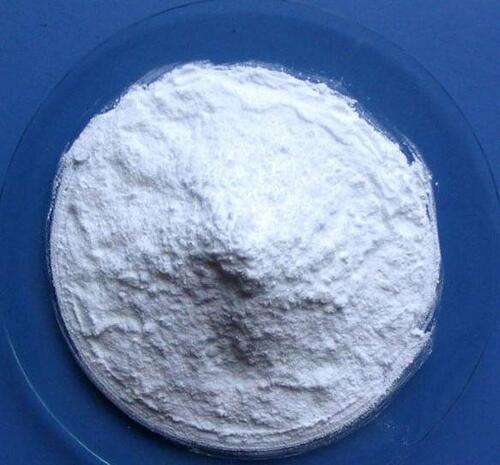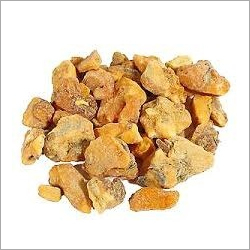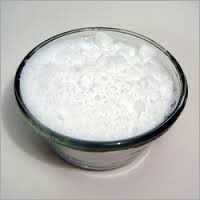Call Us : 08045816053
Aluminium Hydroxide
MOQ : 100 Kilograms
Aluminium Hydroxide Specification
- Density
- 2.42 g/cm3 Gram per cubic centimeter(g/cm3)
- Poisonous
- Yes
- Solubility
- Soluble in acids and alkalis
- Purity
- High
- Molecular Formula
- Al(OH)3
- Form
- Powder
- Storage
- Room Temperature
- Melting Point
- 300 Degree Centigrade
- Classification
- Inorganic Chemicals
- Chemical Name
- Aluminium Hydroxide
- CAS No
- 21645-51-2
- Grade
- Industrial Grade
- Type
- Aluminium Hydroxide
- Application
- Industrial, Pharmaceutical
Aluminium Hydroxide Trade Information
- Minimum Order Quantity
- 100 Kilograms
- Supply Ability
- 10000 Kilograms Per Week
- Delivery Time
- 1-2 Days
About Aluminium Hydroxide
Aluminum hydroxide, also known as alumina trihydrate or aluminum(III) hydroxide, is a chemical compound with the chemical formula Al(OH)3. It is a white, amorphous powder that is insoluble in water and has low solubility in acids and alkalis.
Aluminum hydroxide is an important compound with various applications and uses:
1. Antacid: Aluminum hydroxide is commonly used as an antacid to relieve heartburn, indigestion, and upset stomach. It works by neutralizing excess stomach acid, helping to alleviate the symptoms of acid reflux and related conditions.
2. Phosphate binder: In the medical field, aluminum hydroxide is sometimes used as a phosphate binder to help manage hyperphosphatemia, a condition where there is an excessive level of phosphate in the blood, often associated with chronic kidney disease. It binds to phosphate in the gastrointestinal tract, reducing its absorption.
3. Water treatment: This chemical is used in water treatment processes to help remove impurities, such as suspended solids and certain ions, from water. It can act as a coagulant in the coagulation-flocculation process, aiding in the removal of particles and impurities.
4. Flame retardant: Aluminum hydroxide is employed as a flame retardant in various materials, including plastics, rubber, and textiles. It releases water vapor and cools the material, helping to suppress the spread of flames.
5. Catalyst support: It is used as a support material for catalysts in various chemical processes. The high surface area and thermal stability of aluminum hydroxide make it suitable for this purpose.
6. Filler in cosmetics and skincare products: It is used in cosmetics and skincare products as a filler or bulking agent. It can help improve the texture and feel of these products.
Aluminum hydroxide is generally considered safe for most people when used as directed, such as in antacids. However, excessive intake may lead to aluminum toxicity, which can have adverse effects on health. Its important to use medications containing aluminum hydroxide as directed by a healthcare professional and to be aware of potential interactions with other medications.
Aluminium Hydroxide Properties:
1. Chemical Formula: Its chemical formula is Al(OH)3
2. Physical Form: Aluminum hydroxide is white, amorphous, and odorless powder
3. Solubility: It is practically insoluble in water, which means it does not readily dissolve in aqueous solutions. This property makes it useful in applications where its low solubility is desirable, such as in antacid formulations.
4. Amphoterism: It exhibits amphoterism, which means it can react with both acids and bases. It acts as a base when it reacts with acids to form aluminum salts, and as an acid when it reacts with strong bases to form aluminates.
5. Flame retardant: One of the significant properties of aluminum hydroxide is its use as a flame retardant. When exposed to high temperatures, it decomposes to release water vapor (H2O) and aluminum oxide (Al2O3). The water vapor helps to cool the surrounding material, while the aluminum oxide forms a protective barrier that inhibits the spread of flames.
6. Insolubility in alkalis: Aluminum hydroxide has low solubility in alkalis (bases), which means it does not readily dissolve in alkaline solutions. This property can be advantageous in various industrial processes.
7. Density: This chemical has a relatively low density, making it useful in lightweight materials and applications where bulk is important.
8. Medicinal use: In pharmaceutical and medical applications, aluminum hydroxide is used as an antacid and phosphate binder. It works by neutralizing excess stomach acid and binding to phosphate ions in the gastrointestinal tract.
9. Adsorption capacity: Aluminum hydroxide has an adsorption capacity, which makes it suitable for certain water treatment applications. It can help remove impurities and ions from water by adsorbing them onto its surface.
10. Chemical stability: It is chemically stable under normal conditions and does not readily react with most chemicals at room temperature. However, it can react with strong acids and bases under appropriate conditions.
11. Thermal stability: Aluminum hydroxide has good thermal stability. It can withstand high temperatures without decomposing, which is why it is used as a flame retardant and as a support material for catalysts in high-temperature chemical reactions.
12. High surface area: It has a high surface area, which is beneficial in catalytic applications. The increased surface area provides more active sites for catalytic reactions.
Frequently Asked Questions:
Q. What is aluminum hydroxide?
Ans: Aluminum hydroxide, also known as alumina trihydrate, is a chemical compound with the formula Al(OH)3. It is a white, amorphous powder with various uses in pharmaceuticals, water treatment, flame retardants, and more.
Q. Why is aluminum hydroxide used in antacids?
Ans: This chemical is used in antacids to neutralize excess stomach acid. It works by reacting with hydrochloric acid in the stomach to form aluminum chloride and water, helping to relieve symptoms of heartburn and indigestion.
Q. How does aluminum hydroxide act as a flame retardant?
Ans: When exposed to high temperatures, aluminum hydroxide decomposes to release water vapor and aluminum oxide. The water vapor cools the surrounding material, while the aluminum oxide forms a protective barrier, inhibiting the spread of flames.
Q. What are the side effects of aluminum hydroxide in antacids?
Ans: While generally considered safe, excessive use of aluminum-containing antacids can lead to aluminum toxicity, which may cause symptoms such as constipation, weakness, and bone problems. Its important to use antacids containing aluminum hydroxide as directed.
Q. How is aluminum hydroxide used in water treatment?
Ans: Aluminum hydroxide is used in water treatment processes as a coagulant. It helps particles and impurities in water to clump together, making it easier to remove them during the treatment process.
Q. Is aluminum hydroxide safe for human consumption?
Ans: Aluminum hydroxide is generally safe when used as directed in medications and antacids. However, excessive consumption can lead to aluminum toxicity. Always follow healthcare professionals recommendations when using aluminum hydroxide-containing products.
Q. What is the chemical structure of aluminum hydroxide?
Ans: Aluminum hydroxide consists of aluminum ions (Al3+) bonded to hydroxide ions (OH-) in a crystalline lattice structure, forming a white, amorphous powder.
Q. Can aluminum hydroxide be used in cosmetics and skincare products?
Ans: Yes, aluminum hydroxide is used in cosmetics and skincare products as a filler or bulking agent to improve texture and feel. It is considered safe for topical use in these applications.
Q. What is the role of aluminum hydroxide in phosphate binding?
Ans: In the medical field, aluminum hydroxide is used as a phosphate binder to manage hyperphosphatemia, a condition often associated with chronic kidney disease. It binds to phosphate ions in the gastrointestinal tract, reducing their absorption and helping to lower phosphate levels in the blood.
Q. Is aluminum hydroxide the same as aluminum oxide (alumina)?
Ans: No, aluminum hydroxide and aluminum oxide are different compounds. Aluminum hydroxide is Al(OH)3, while aluminum oxide, also known as alumina, is Al2O3. Aluminum hydroxide has hydroxide ions in its structure, whereas aluminum oxide does not.
FAQs of Aluminium Hydroxide:
Q: What is Aluminium Hydroxide?
A: Aluminium Hydroxide is an inorganic chemical powder with the chemical formula Al(OH)3.Q: What is the purity level of Aluminium Hydroxide?
A: Aluminium Hydroxide has a high level of purity.Q: What is the application of Aluminium Hydroxide?
A: Aluminium Hydroxide is used in both industrial and pharmaceutical applications.Q: What is the storage requirement for Aluminium Hydroxide?
A: Aluminium Hydroxide should be stored at room temperature.Q: What is the classification of Aluminium Hydroxide?
A: Aluminium Hydroxide is classified as an inorganic chemical powder.Q: What is the solubility of Aluminium Hydroxide?
A: Aluminium Hydroxide is soluble in both acids and alkalis.Q: What is the melting point of Aluminium Hydroxide?
A: The melting point of Aluminium Hydroxide is 300 Degree Centigrade.
Tell us about your requirement

Price:
Quantity
Select Unit
- 50
- 100
- 200
- 250
- 500
- 1000+
Additional detail
Mobile number
Email
More Products in Industrial Chemicals Category
Calcium Carbonate
Price 15.0 INR / Kilograms
Minimum Order Quantity : 25 Kilograms
Storage : Room Temperature
Application : Industrial
Grade : Industrial Grade
Aluminium Trihydrate
Price 80 INR / Kilograms
Minimum Order Quantity : 100 Kilograms
Storage : Room Temperature
Application : Industrial
Form : Powder
Grade : Industrial Grade
STARCH ETHER
Price 200.0 INR / Kilograms
Minimum Order Quantity : 100 Kilograms
Storage : Room Temperature
Application : Industrial
Form : Powder
Grade : Industrial Grade

 Send Inquiry
Send Inquiry







 English
English Spanish
Spanish French
French German
German Italian
Italian Chinese (Simplified)
Chinese (Simplified) Japanese
Japanese Korean
Korean Arabic
Arabic Portuguese
Portuguese